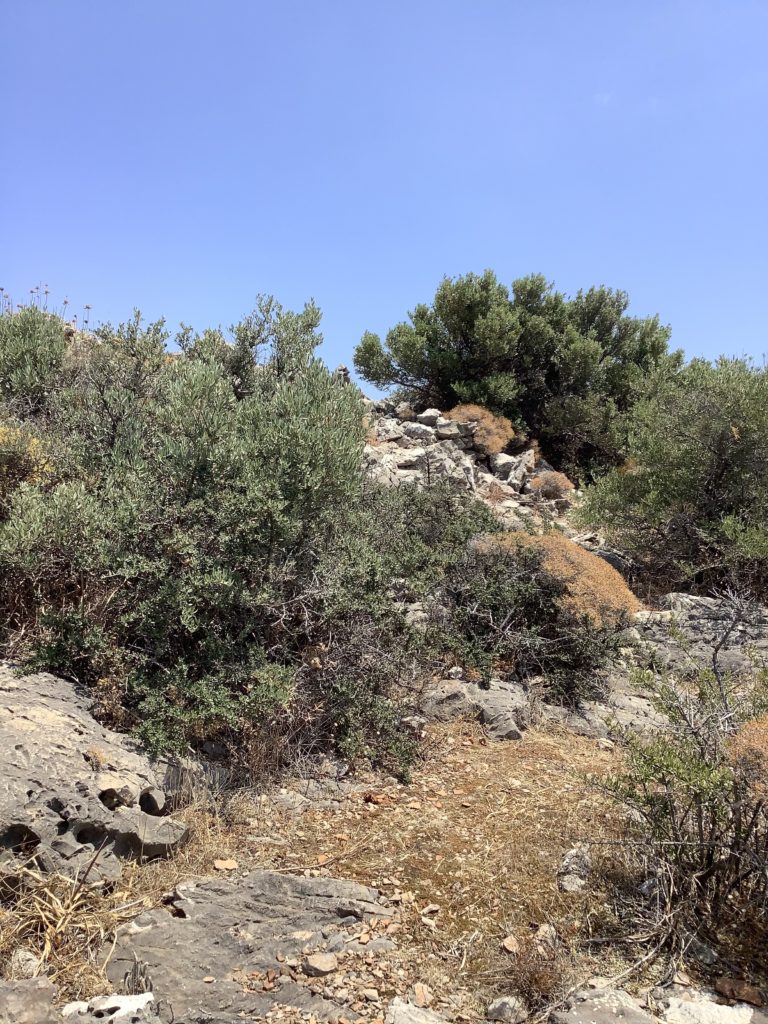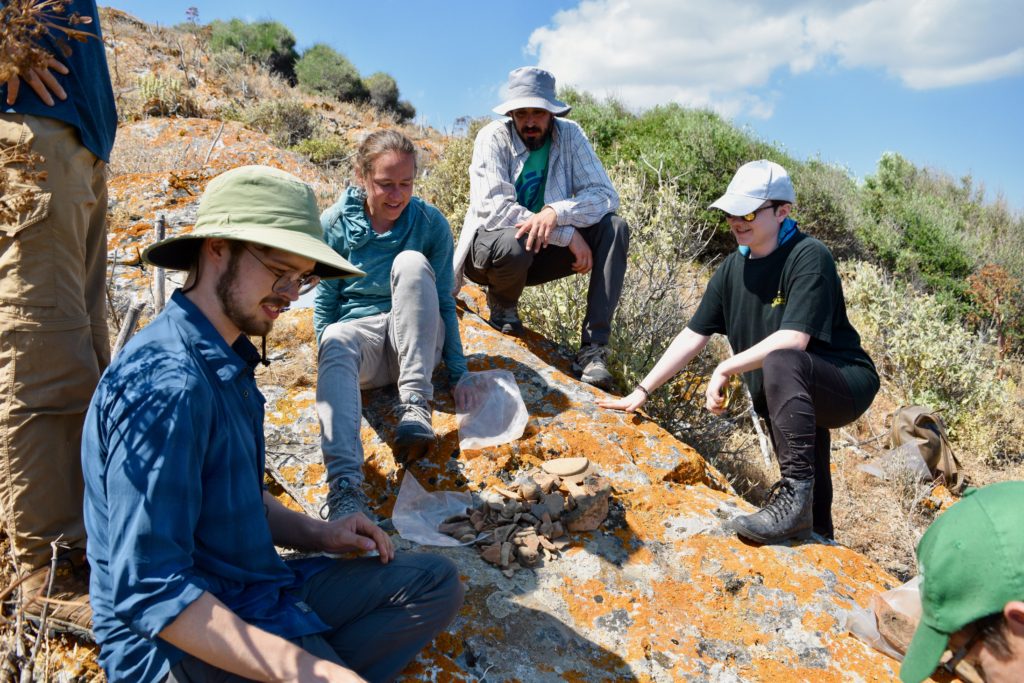Editorial Note: This post was written by Irum Chorghay, a University of Toronto student, about work at Koroni, on Raphtis Island, and in the Brauron Museum during week 3 of the project.

Vasilis, our ship’s captain, has given us the go-ahead that the waves are cooperating and we can survey Raphtis island again after a week of windy weather that was not conducive to sailing.

But I spend most of my time at Koroni. Days at the Koroni acropolis begin with a hike. As July approaches, the weather become hotter and more humid, and by the time we’ve reached our first grid square for the day, we are soaked in sweat. Hydration becomes more and more essential as we search the ground for new finds. The scatters have a strange distribution: some squares are dense with artifacts, producing up to a hundred fragments of roof tiles and amphora bases, rims, and handles, while others hardly yield even one roof tile. My teammate, Jenny, finds a sherd engraved with an Epsilon and a Delta, and we spend the rest of the day coming up with theories for who “Ed” was—and what did he stand for?

Late in the week I am sent to survey again on Raphtis Island. The topography is even more dramatic than the high fastness of the Koroni acropolis. No matter where you wander on the island, the ground never flattens out. We spend the day surveying on a part of the island I haven’t seen before. Some of the corners of the furthest grid squares in the area are not marked, because they are located someplace in midair past the edge of a small cliff. In this area of extreme landscape and rocky crevasses, I manage to spot some obsidian—clearly I learned a lot from spending hours at Pounta with my eyes glued to the ground, picking lithics. Another interesting aspect of the finds in this area of the island is that we are finding a lot of coarse-ware that was probably used for cooking or storage. It is made of rough, chunky, and dark fabrics that are new and unfamiliar to me. Common among these finds are typical amphora sherds, but unlike the amphoras I’ve been seeing at Koroni, they are perforated all the way through near joints, like where handles adjoin bodies. One of the graduate students and I find three chunks of the rim of a giant pithos with braided detailing along the rim. He links them together to form almost a complete opening and I find this beautiful. Our team leader Grace selects one chunk for collection; we are quite picky in choosing which finds we collect from the island, where each grid square continues to yield abundant quantities of all shapes of pottery, both fineware, painted pottery, and cookware, as well as numerous figurines. Units take one to two hours to complete, as opposed to the half hour to hour average at Koroni. We repeatedly pore over each unit collecting diagnostic items, double- and triple-checking each other’s work to ensure that we don’t miss anything important or informative.

At the museum, things are getting busier: we have to pick up additional storage containers to accommodate for our growing collection of finds, and Rob, who is in charge of processing finds in the apotheke, begins to photograph them using a special high-resolution camera and a tripod fitted with special lights. Our small assemblage of figurines attracts the attention of the museum’s resident conservators, who often pop into our small room excitedly to see our latest finds.
